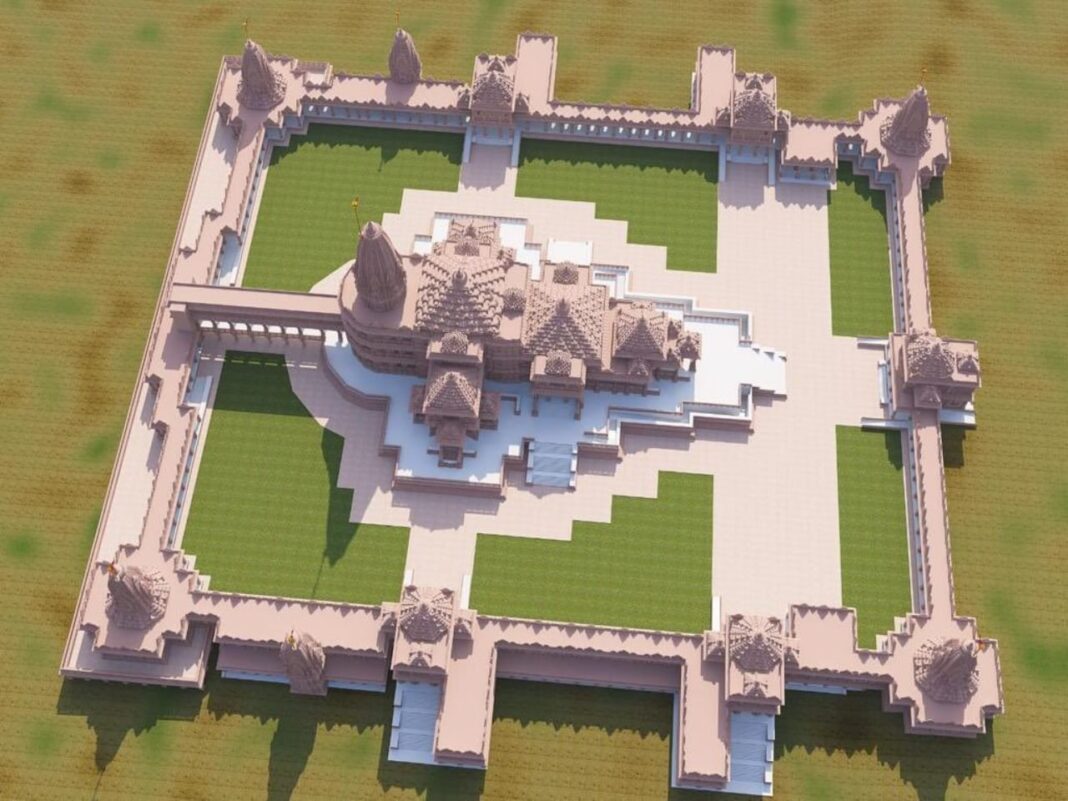New Delhi: Ayodhya is all set to script history as the inauguration of the much-awaited grand Ram Temple is approaching. The consecration ceremony, which will be performed by Prime Minister Narendra Modi, at the temple, is scheduled to take place on January 22 amid tight security. Also known as pran-pratishtha, consecration ceremony will include the installation of the idol of Lord Ram in the sanctum-sanctorum, garbha-griha, of the temple.
Preparations are in full swing to make the event grand. Meanwhile, security personnel are leaving no stone unturned to ensure the safety of the temple as well as the visitors coming to attend the grand inauguration ceremony. Devotees, on the other hand, will be able to seek the blessings of Lord Ram starting from January 24.
Ahead of the inauguration of the temple, the Shri Ram Janmbhoomi Teerth Kshetra Trust has enlisted its key features. Let’s take a look at it below. Key features of the much-awaited Shri Ram Janmabhoomi Temple Design : The design of the temple is based on the traditional Nagar architectural style, one of the two main styles of Hindu temple architecture.
Characterised by its tall, pyramidal towers called shikharas, such temples are mostly popular in the regions around Rajputana, Malwa, and Kalinga. Dimensions: While the length of the temple, starting from east to west, is 380 feet, it is 250 feet wide and 161 feet tall. Layers: The temple will be a three-story structure, with each floor having a height of 20 feet.
While the first floor will feature Shri Ram Darbar, the main sanctum will be the adobe of a child form of Lord Shri Ram (deity of Shri Ram Lalla Sarkar). Carved pillars: A total of 392 pillars, adorned with carved statues of Gods and Goddesses, have been constructed to support the grand structure. The temple has 44 gates for entrance and exit.
Pavilions: For various functions and regular activities, the temple will be having five pavilions including prayer, color, dance, sabha and Kirtan pavilions. Stairs at Singhdwar : Entry to the temple will be allowed from the east side and the devotees need to climb 32 stairs from Singhdwar. Special facility: The temple will be equipped with ramps and lifts to ease the movement of specially-abled devotees and the elderly.
The Parkota: A 73-metre-long and 14 feet wide rectangular wall will be developed surrounding the temple. Dedicated corners: Each corner of the park will be dedicated to a specific god. A total of four temples dedicated to Lord Shiva, Ganapati, Mother Bhagwati and the Sun God will be developed.
Temples for Hanuman Ji and Maa Annapurna will be in the southern and northern arms, respectively. Other important temples: In the grand Ram Temple complex, there will be other small temples dedicated to saints and prominent personalities related to Lord Ram. The temples will be dedicated to Maharishi Valmiki, Maharishi Vishwamitra, Maharishi Vashishtha, Maharishi Agastya, Mata Shabari, Nishadraj, and Rishipatni Devi Ahilya.
Sitakoop: Dating back to the ancient era, a mythological well, also known as Sitakoop, will be present near the temple. Medical facility: With a capacity of 25,000 people, a Pilgrims Facility Centre (PFC) is being constructed. This facility will ensure medical facilities and locker facilities for the devotees visiting the temple.
Renovation: The ancient Lord Shiva temple on Navratna Kuber Tila in the southwestern part has been renovated, with the installation of a statue of Jatayu, a demigod in the Hindu epic Ramayana. No Iron: It is noteworthy to mention that there is no use of iron in the construction of the temple. Moreover, there is no concrete on the ground as well.
Artificial rock: Resembling an artificial rock, a 14-metre-thick Roller Compacted Concrete (RCC) foundation has been laid under the temple. RCC is a special blend of concrete that has essentially the same basic ingredients as conventional concrete, such as cement, water, and aggregates, but in different ratios. Moist protection: In a bid to protect the temple from soil moisture, a 21-foot-high plinth made of granite has also been constructed.
Independent facilities: In a bid to minimise dependence on external resources, independent facilities such as a water treatment plant, sewer treatment plant, a power station and water system for fire fighting have been built within the temple complex. Hygiene: To ensure a clean and hygienic environment for devotees, bathroom facilities, toilets, wash basins, and open taps are being installed in the temple complex. Nature in focus: With a focus on environmental conservation, the temple has been constructed following Indian tradition and using indigenous technology.
Of the total 70-acre area, 70 per cent will remain green forever. Construction cost: The estimated cost of the construction of the temple ranges between Rs 1,400 crore to Rs 1,800 crore. The temple trust, Shri Ram Janmbhoomi Teerth Kshetra, is receiving donations ranging from Rs 60-70 lakh for the construction.
.
From: news9live
URL: https://www.news9live.com/knowledge/key-features-of-the-ayodhya-ram-temple-ayodhya-ram-mandir-2397192



